M
musiclovertony
Guest
I recently returned from a family vacation in the town of Samara, Guanacaste, Costa Rica. It's a delightful place we've visited many times and to which we'll, no doubt, return.
The Samara area is in an area of mostly secondary growth tropical dry forest. There is a moist growing season from May-November, where rain can be expected almost every afternoon/evening. From December-April is the dry season. There can be weeks or months with no rain during the dry season. The forests are deciduous, here, losing their leaves in the dry season.
The orchids I saw were all epiphytes (besides the African, invasive Oeceoclades maculata). I also saw several different bromeliads. The most common orchid I saw was Brassavola Nodosa. It seemed to grow everywhere it could get a root-hold! I saw it growing 3 feet up the trunk on palm trees in full sun. I saw it growing 40 feet up in the branches of Guanacaste trees in dappled sun. I saw it growing 2 feet up in mangrove root/branches in both full and dappled sun. I even saw a couple plants growing lithophytically on cliff-faces. I also saw a couple dormant Catasetum in the crotches of Guanacaste trees. These plants were growing at sea level. Many of the Brassavola nodosa were growing in places where there's little doubt they would get ocean spray during high tide/high wind times. Most of the orchids had seed pods present.
Being that my family is not very outdoors oriented, I didn't get a chance to do much exploring beyond a few hikes to the headlands at either end of the beach and a canopy zip-line tour. When we were in the taxi on the way to and from the airport, I saw huge numbers of epiphytes in many of the mature trees in the pastures and along the rivers and streams. I wish I could have stopped and taken more pictures...some of the trees had so many plants growing on them that one could barely see any of the bark!!
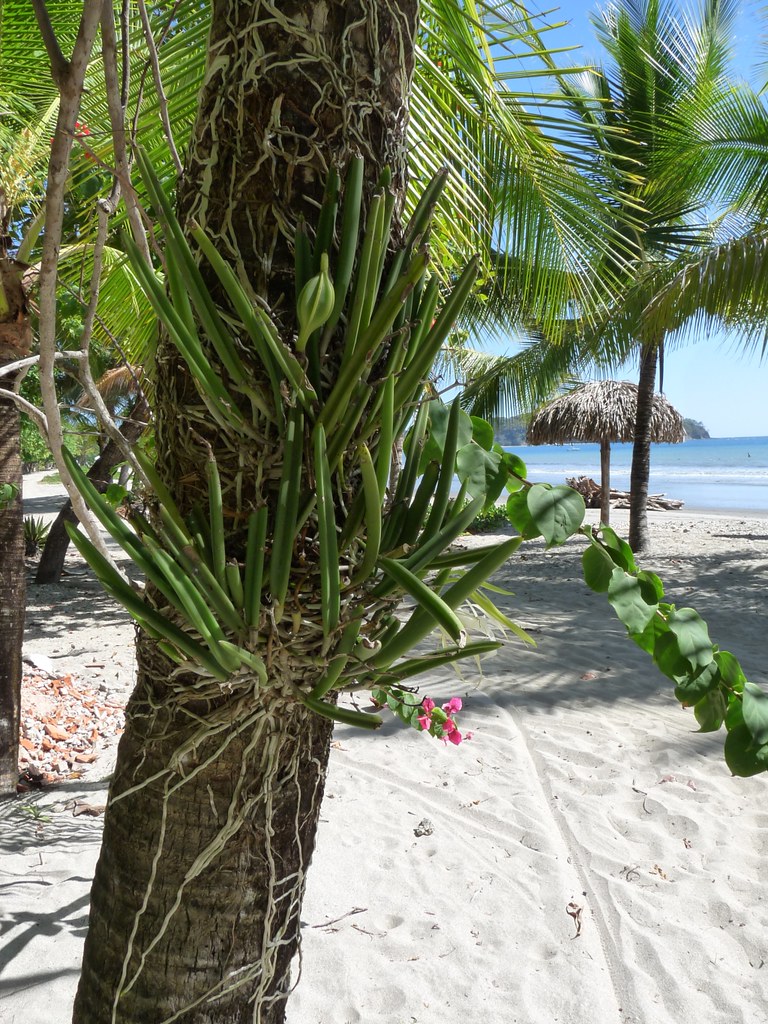
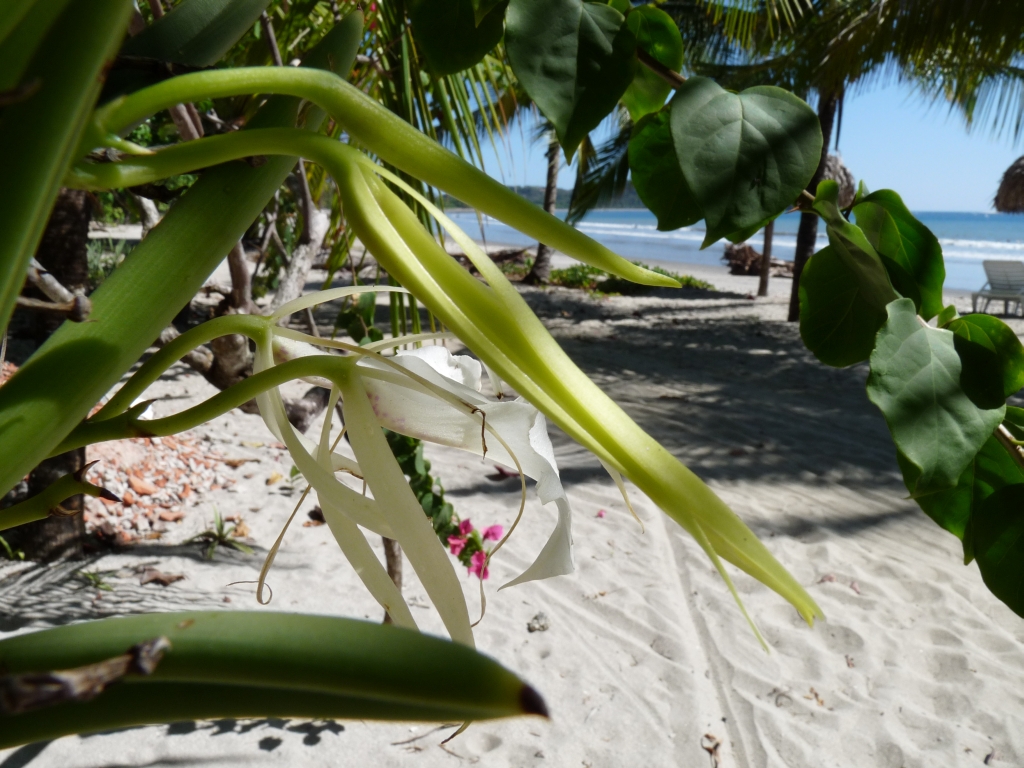
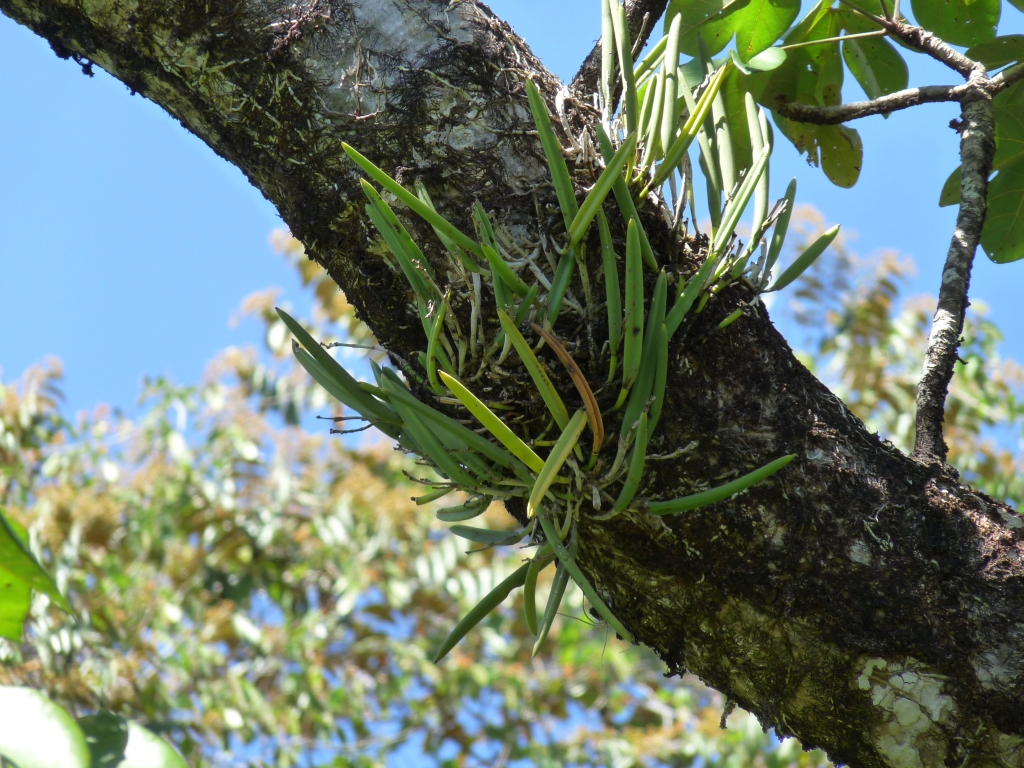
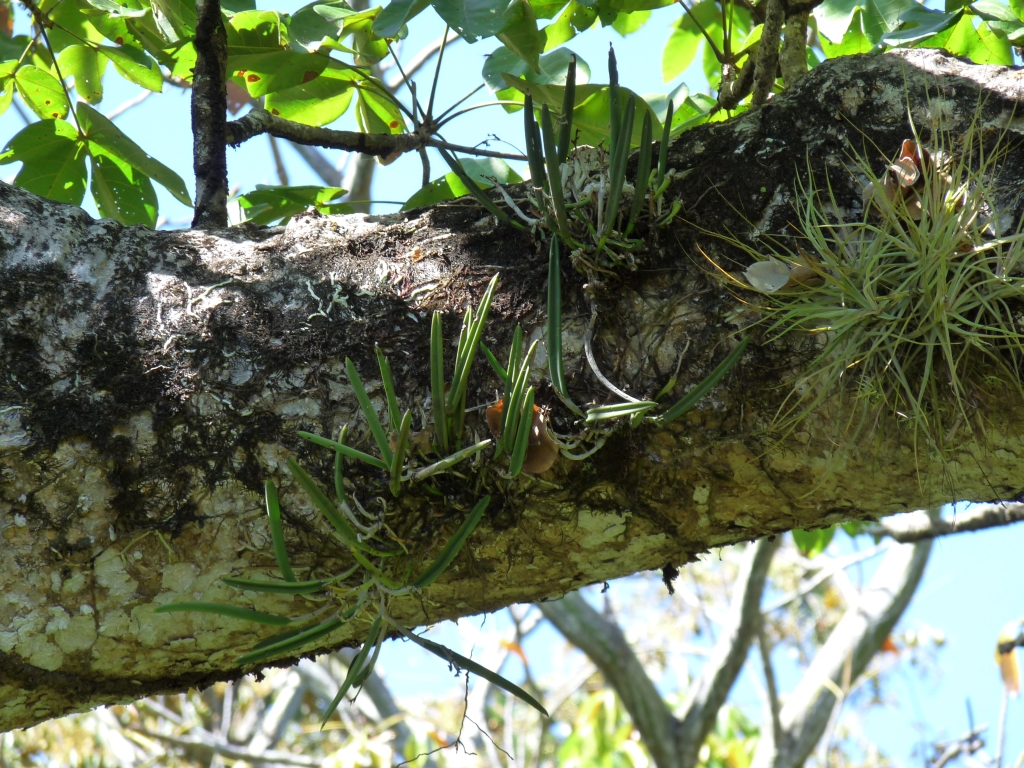
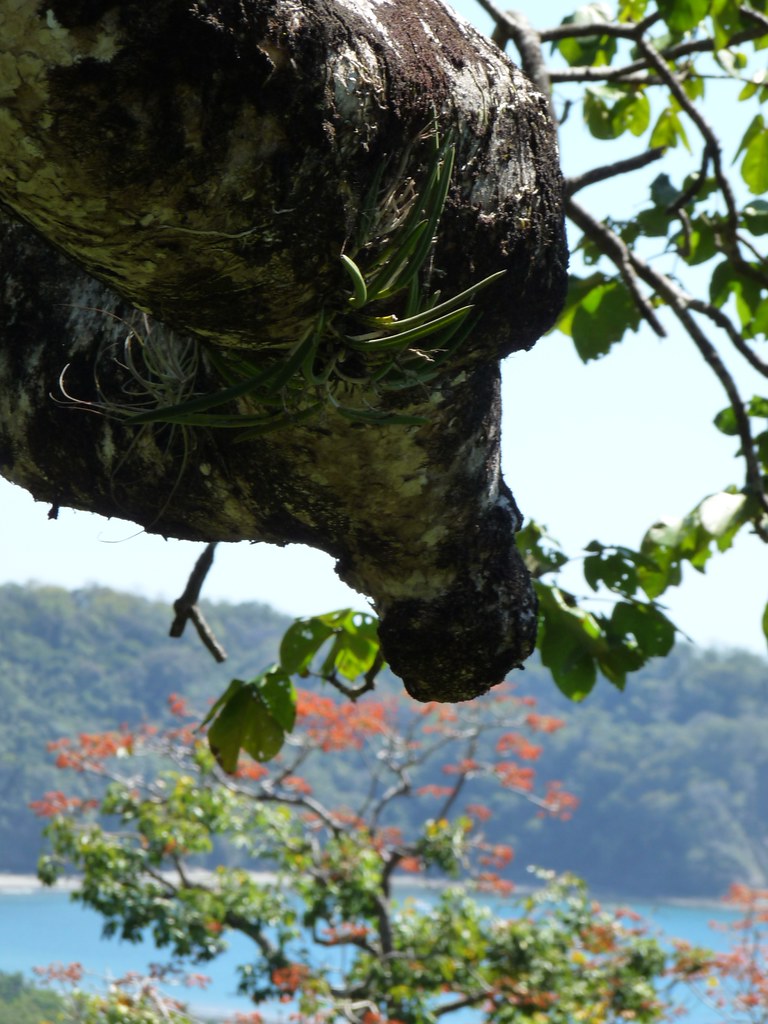
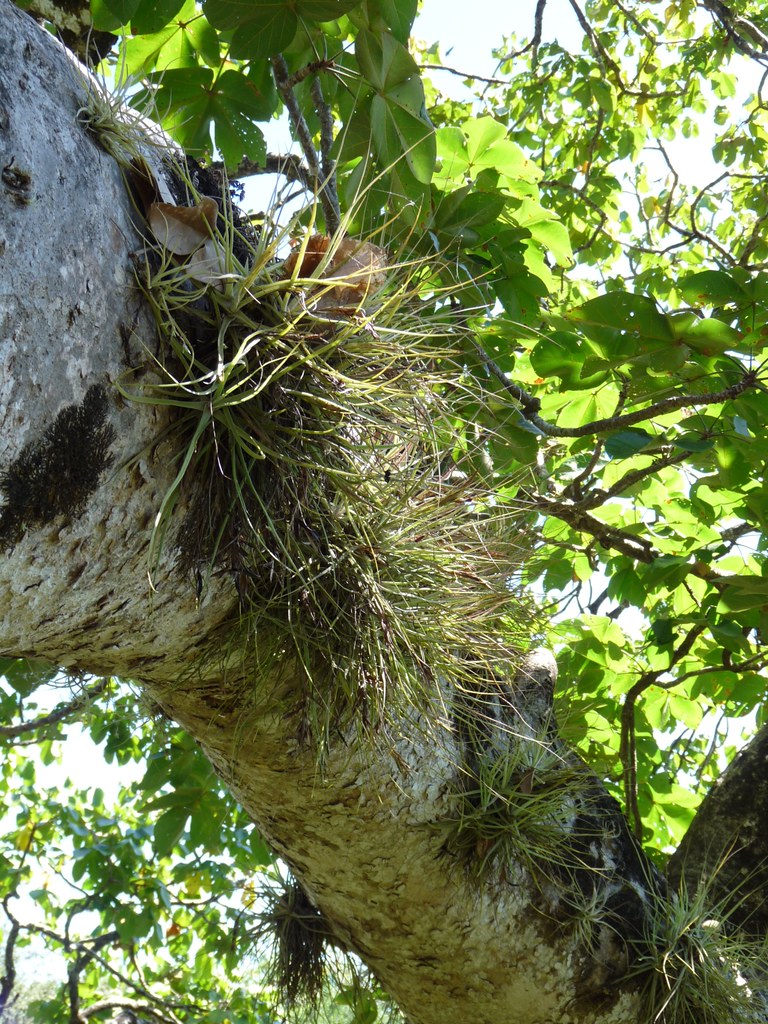
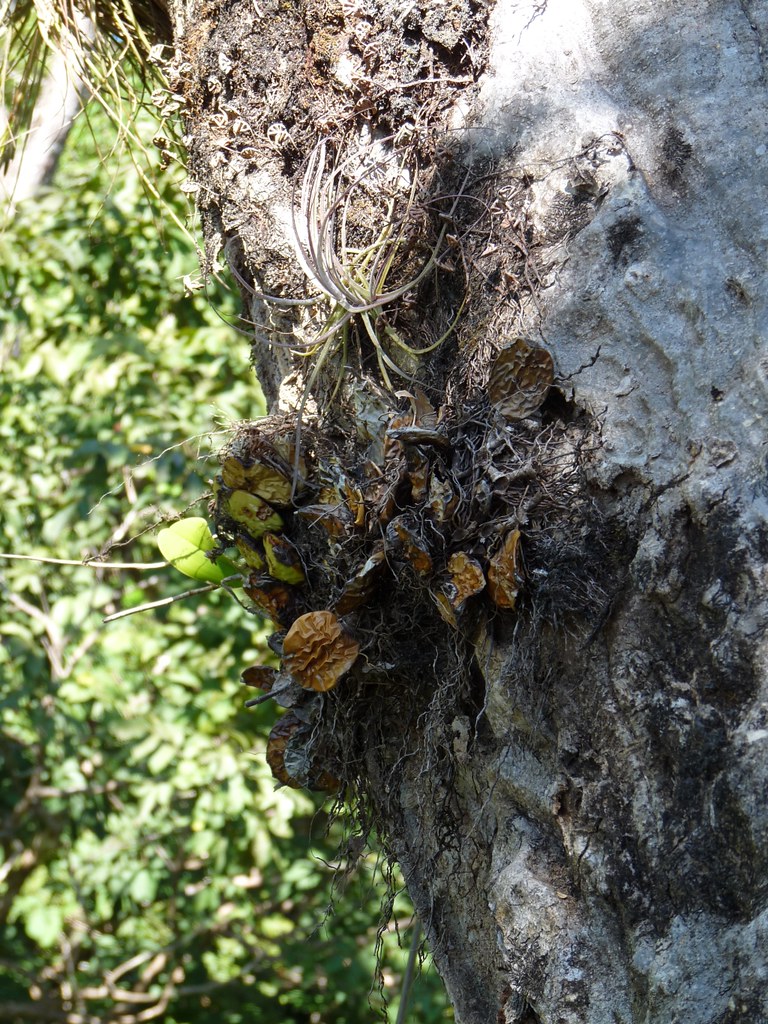
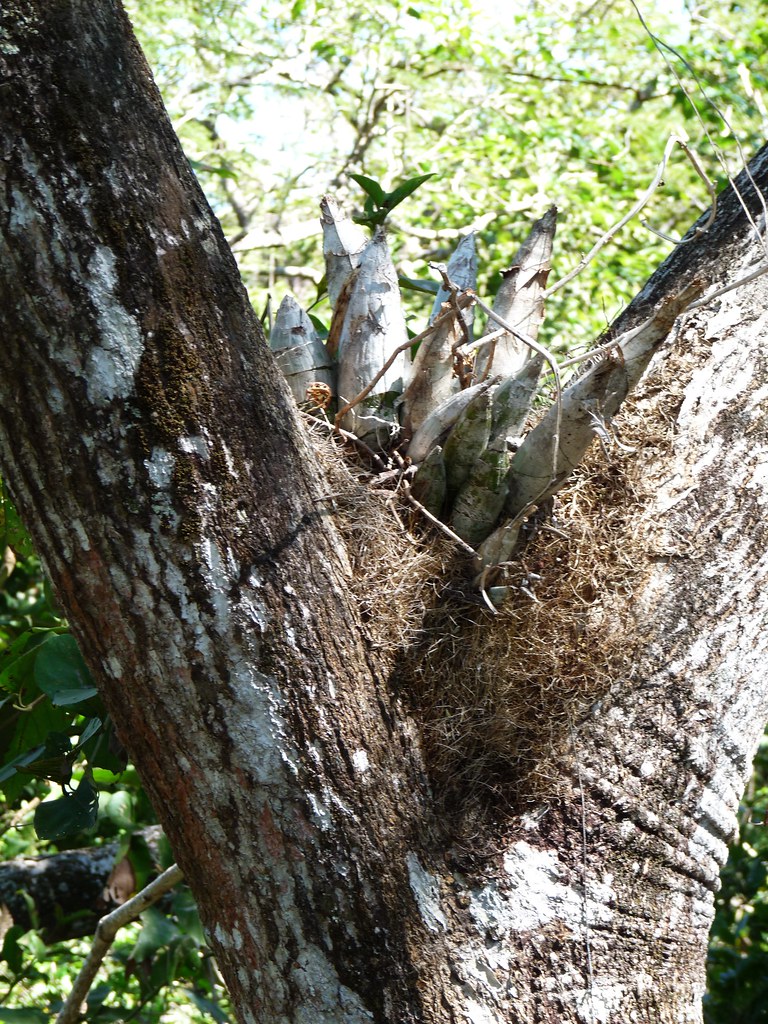
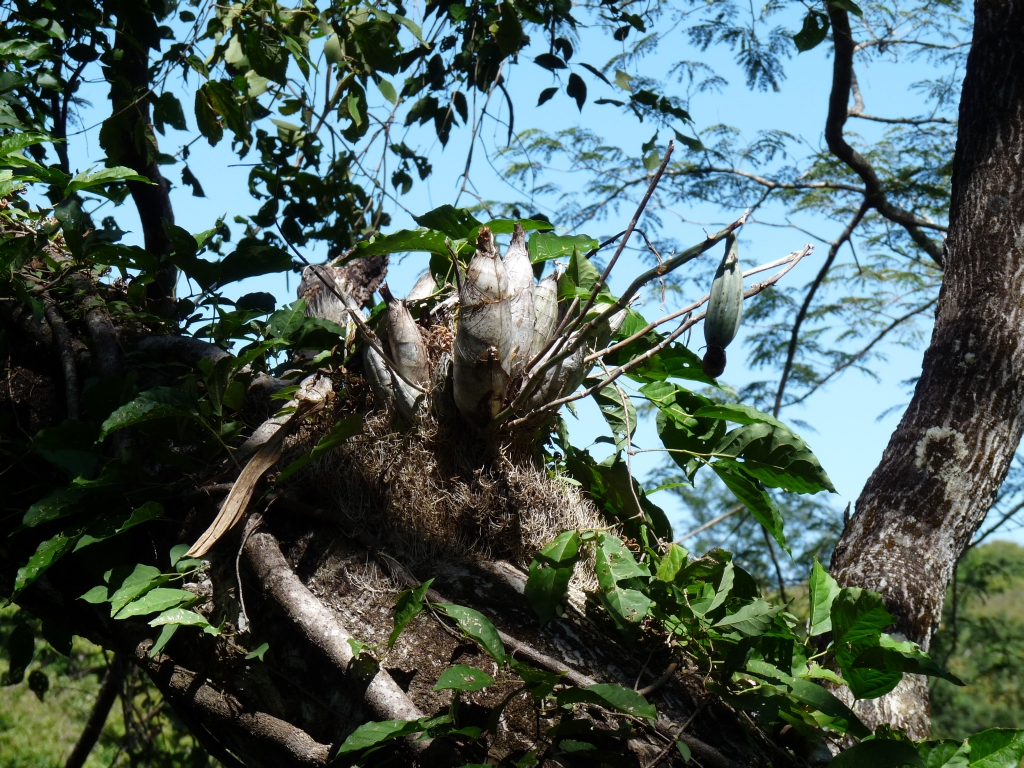
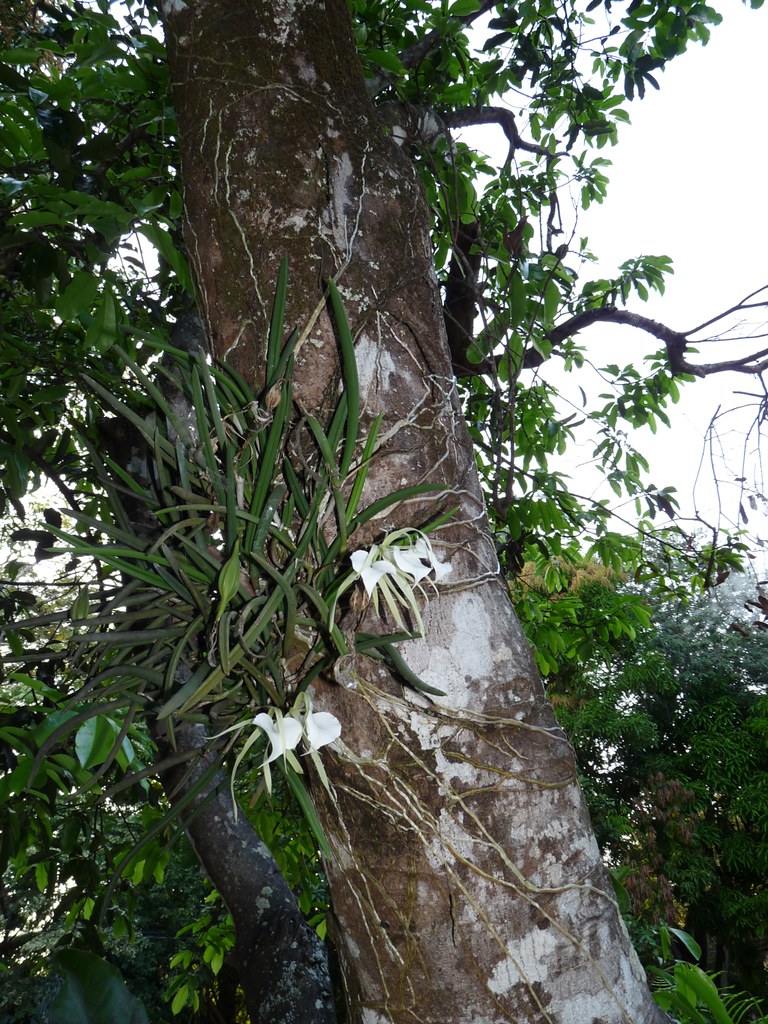
The Samara area is in an area of mostly secondary growth tropical dry forest. There is a moist growing season from May-November, where rain can be expected almost every afternoon/evening. From December-April is the dry season. There can be weeks or months with no rain during the dry season. The forests are deciduous, here, losing their leaves in the dry season.
The orchids I saw were all epiphytes (besides the African, invasive Oeceoclades maculata). I also saw several different bromeliads. The most common orchid I saw was Brassavola Nodosa. It seemed to grow everywhere it could get a root-hold! I saw it growing 3 feet up the trunk on palm trees in full sun. I saw it growing 40 feet up in the branches of Guanacaste trees in dappled sun. I saw it growing 2 feet up in mangrove root/branches in both full and dappled sun. I even saw a couple plants growing lithophytically on cliff-faces. I also saw a couple dormant Catasetum in the crotches of Guanacaste trees. These plants were growing at sea level. Many of the Brassavola nodosa were growing in places where there's little doubt they would get ocean spray during high tide/high wind times. Most of the orchids had seed pods present.
Being that my family is not very outdoors oriented, I didn't get a chance to do much exploring beyond a few hikes to the headlands at either end of the beach and a canopy zip-line tour. When we were in the taxi on the way to and from the airport, I saw huge numbers of epiphytes in many of the mature trees in the pastures and along the rivers and streams. I wish I could have stopped and taken more pictures...some of the trees had so many plants growing on them that one could barely see any of the bark!!
























